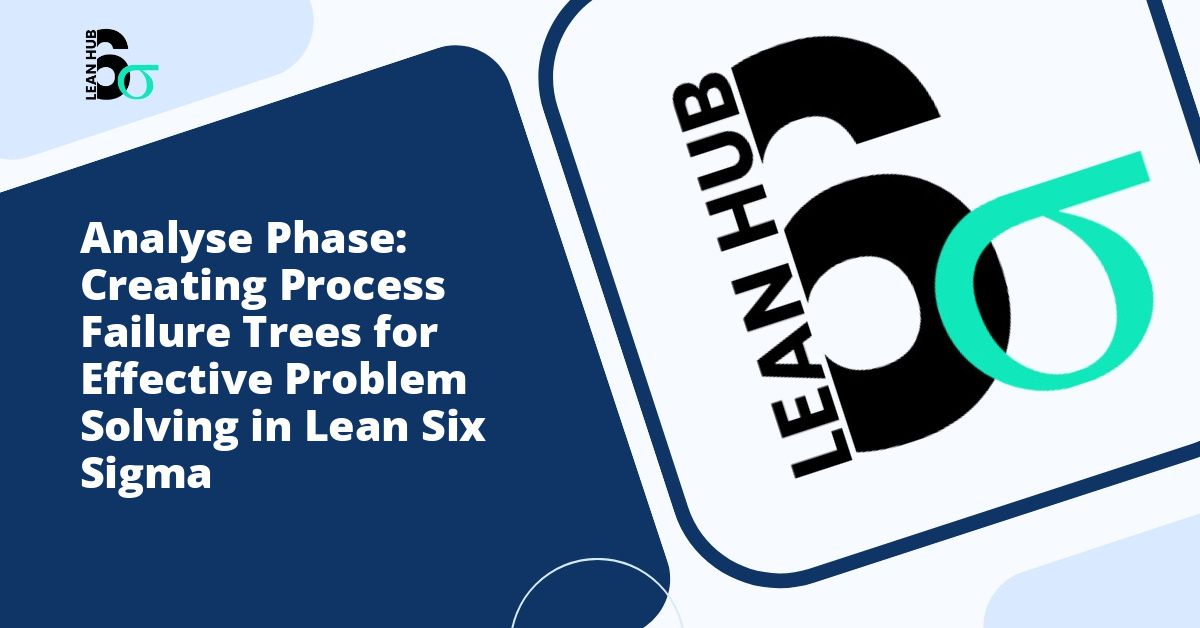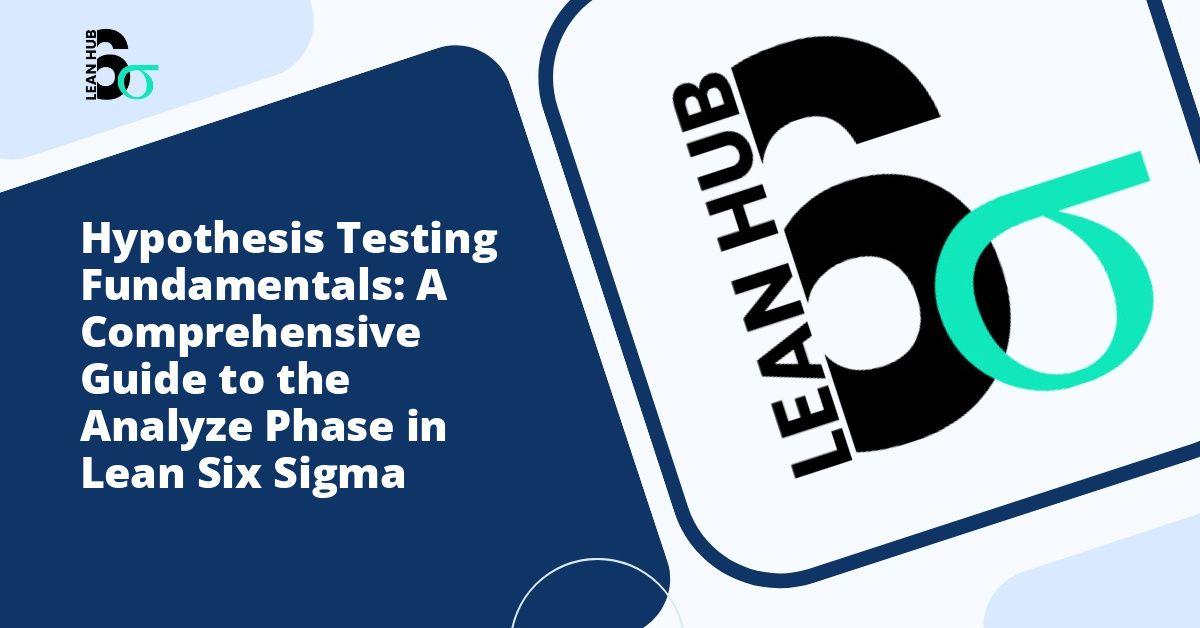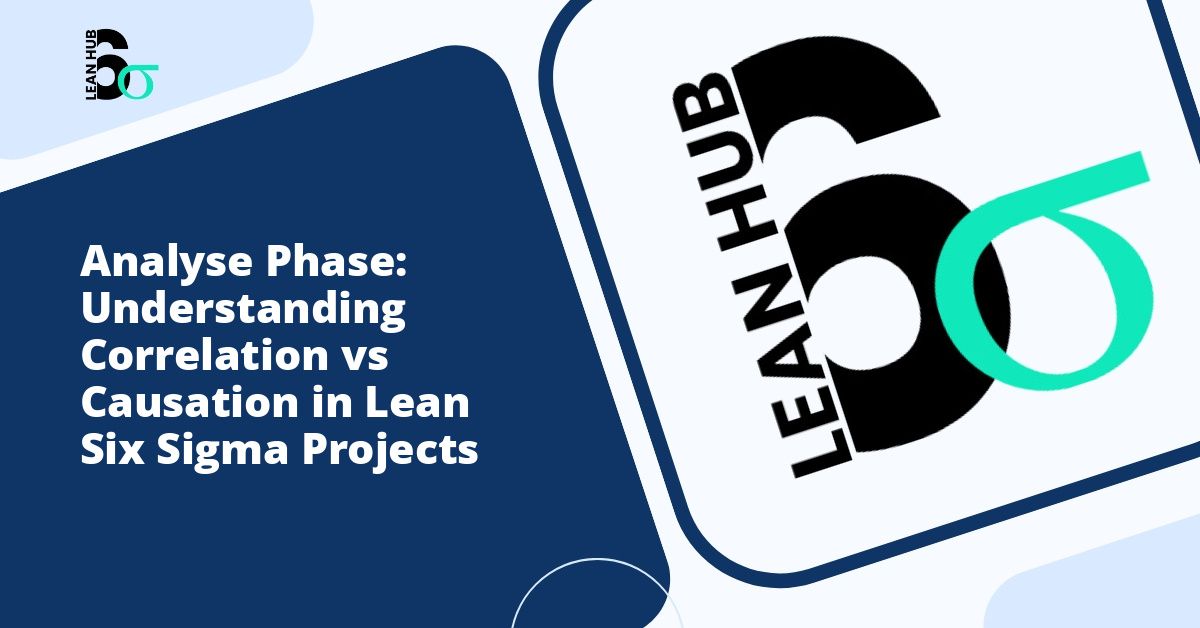In the world of process improvement, understanding how to properly formulate hypotheses is a critical skill that can make or break your Six Sigma project. Whether you are working on a complex manufacturing challenge or streamlining service delivery, the ability to create clear, testable hypotheses forms the foundation of data-driven decision making. This comprehensive guide will walk you through the essential steps of developing null and alternative hypotheses that will strengthen your lean six sigma initiatives and lead to meaningful improvements.
Understanding the Importance of Hypotheses in Six Sigma
Before diving into the mechanics of hypothesis formulation, it is essential to understand why hypotheses matter in Six Sigma projects. At its core, Six Sigma is a disciplined, data-driven approach to eliminating defects and reducing variation in processes. Hypotheses serve as educated predictions about relationships between variables in your process, providing a structured framework for testing assumptions and validating improvements. You might also enjoy reading about Lean Six Sigma Analyze Phase: The Complete Guide for 2025.
When you formulate hypotheses correctly during the recognize phase, you establish a clear direction for your project. This clarity helps your team focus resources on testing specific claims rather than wandering through data without purpose. Moreover, well-constructed hypotheses facilitate communication with stakeholders, making it easier to explain what you are testing and why it matters to the organization. You might also enjoy reading about 5 Whys Technique: How to Dig Deep and Discover Root Causes in Problem-Solving.
What Are Null and Alternative Hypotheses?
In statistical testing, you work with two complementary hypotheses that represent different possible truths about your process. You might also enjoy reading about How to Conduct a 5 Whys Analysis: Step-by-Step Guide with Examples.
The Null Hypothesis
The null hypothesis, typically denoted as H0, represents the status quo or the assumption that there is no effect, no difference, or no relationship between variables. It is the hypothesis that you aim to test against and potentially reject based on your data. Think of the null hypothesis as the default position that assumes nothing has changed or that any observed differences are due to random chance rather than a real effect.
For example, if you are testing whether a new training program improves employee productivity, your null hypothesis would state that the training program has no effect on productivity levels.
The Alternative Hypothesis
The alternative hypothesis, denoted as H1 or Ha, represents what you suspect might be true or what you hope to demonstrate through your analysis. It directly contradicts the null hypothesis and suggests that there is a real effect, difference, or relationship between variables. This is typically the hypothesis that aligns with your improvement objectives in a lean six sigma project.
Continuing with the training program example, your alternative hypothesis would state that the training program does improve employee productivity.
Steps to Formulate Hypotheses for Your Six Sigma Project
Step 1: Clearly Define Your Problem Statement
Effective hypothesis formulation begins with a crystal-clear problem statement developed during the recognize phase of your project. Your problem statement should specify what issue you are addressing, where it occurs, when it happens, and what impact it has on your process or organization. Without this clarity, your hypotheses will lack focus and direction.
Take time to collaborate with your team and stakeholders to ensure everyone agrees on what problem you are solving. Document the current state, including baseline metrics that quantify the problem’s magnitude. This groundwork makes hypothesis formulation much more straightforward.
Step 2: Identify Key Process Variables
Once you have defined your problem, identify the input variables (X’s) that might influence your output variable (Y). In Six Sigma terminology, we often express this as Y = f(X), meaning your output is a function of your inputs. Your hypotheses will typically test relationships between specific X variables and your Y variable.
Use tools like cause-and-effect diagrams, process maps, and brainstorming sessions to generate a comprehensive list of potential variables. Then prioritize these variables based on their likely impact and your ability to measure them. The variables you select for hypothesis testing should be both significant and measurable.
Step 3: State Your Null Hypothesis
With your problem and variables identified, you can now formulate your null hypothesis. Remember that the null hypothesis always assumes no effect, no difference, or no relationship. Use clear, specific language that can be tested statistically.
Common formats for null hypotheses include:
- There is no difference between group A and group B on the measured outcome
- The process change has no effect on the defect rate
- There is no relationship between variable X and variable Y
- The mean of the population equals a specific value
For instance, if you are testing whether machine temperature affects product quality, your null hypothesis might state: “Machine temperature has no effect on the defect rate in the production process.”
Step 4: State Your Alternative Hypothesis
Your alternative hypothesis should directly contradict your null hypothesis and align with what you believe or hope to prove through your lean six sigma project. You can formulate alternative hypotheses as either directional (one-tailed) or non-directional (two-tailed), depending on whether you are predicting a specific direction of effect.
A non-directional alternative hypothesis simply states that there is a difference or effect without specifying the direction: “Machine temperature does affect the defect rate in the production process.”
A directional alternative hypothesis specifies the direction: “Higher machine temperatures increase the defect rate in the production process.”
Choose directional hypotheses when you have strong theoretical or practical reasons to expect an effect in a particular direction. Otherwise, non-directional hypotheses provide more flexibility and are generally more conservative.
Step 5: Ensure Your Hypotheses Are Testable
A critical characteristic of good hypotheses is testability. Your hypotheses must be formulated in ways that allow you to collect data and perform statistical tests to evaluate them. This means your variables must be measurable, and you must have access to the necessary data or the ability to collect it.
Ask yourself these questions to verify testability:
- Can I measure all variables involved in my hypotheses?
- Do I have access to sufficient data, or can I collect it within my project timeline?
- Is there an appropriate statistical test for evaluating these hypotheses?
- Are my hypotheses specific enough to be proven false?
Common Mistakes to Avoid
Being Too Vague
Hypotheses that use ambiguous terms or lack specificity cannot be tested effectively. Instead of saying “the process will improve,” specify exactly what will improve and by what measure, such as “the cycle time will decrease.”
Confusing Null and Alternative Hypotheses
Remember that the null hypothesis always represents the status quo or no effect. New practitioners sometimes reverse these, which leads to confusion in interpretation. Take extra care to ensure you have formulated these correctly.
Creating Untestable Hypotheses
Avoid hypotheses that cannot be evaluated with available data or measurement systems. If you cannot measure something reliably, you cannot test a hypothesis about it.
Formulating Too Many Hypotheses
While it may be tempting to test multiple hypotheses simultaneously, this can dilute your focus and complicate your analysis. Prioritize the most critical hypotheses that directly address your problem statement and will have the greatest impact on your project goals.
Practical Example: Putting It All Together
Let us walk through a complete example to illustrate the hypothesis formulation process in a lean six sigma context.
Problem Statement: The customer service department receives complaints about long wait times, with average hold times of 8 minutes compared to an industry benchmark of 5 minutes.
Key Variables: After analysis during the recognize phase, the team identifies call volume, number of available representatives, representative training level, and time of day as potential input variables affecting wait time.
Null Hypothesis: There is no relationship between the number of available representatives and average customer wait time.
Alternative Hypothesis: Increasing the number of available representatives decreases average customer wait time.
These hypotheses are clear, specific, and testable. The team can collect data on representative staffing levels and corresponding wait times, then use appropriate statistical tests to evaluate whether to reject the null hypothesis in favor of the alternative.
Moving Forward with Your Hypotheses
Once you have formulated your null and alternative hypotheses, you are ready to move into the measurement and analysis phases of your Six Sigma project. Your hypotheses will guide your data collection efforts and determine which statistical tests you will employ. Throughout this process, maintain careful documentation of your hypotheses, the reasoning behind them, and the results of your tests.
Remember that hypothesis testing is not about proving yourself right or wrong but about using data to make informed decisions. Even when you fail to reject a null hypothesis, you gain valuable knowledge that helps you understand your process better and redirects your improvement efforts toward more promising areas.
By mastering the skill of hypothesis formulation, you strengthen your ability to drive meaningful improvements through lean six sigma methodology. Clear hypotheses transform vague improvement ideas into testable propositions, bringing scientific rigor to your process improvement efforts and increasing the likelihood of sustainable, data-driven results.








